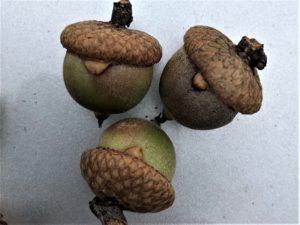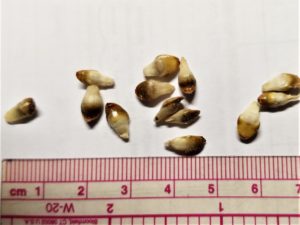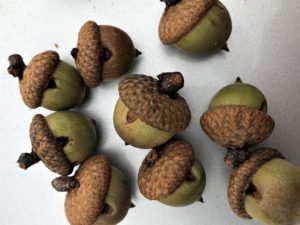By Linda Williams, forest health specialist, Woodruff, Linda.Williams@wisconsin.gov, 920-360-0665
Acorns are dropping, but do you know why? If you take a closer look at the acorns on the ground, you might notice they look a little odd.

Pip galls appear to be inserted between the acorn and the cap.
When you examine these prematurely dropped acorns, you may see what looks like a fleshy protrusion inserted between the acorn and the cap. These protrusions, known as acorn pip galls, are caused by the gall wasp Callirhytis operator. Inside each gall is a gall wasp larva. The galls will sometimes drop off the acorn to the ground and be mistaken for seeds, or they may remain attached as the acorn drops to the ground.

Pip galls that have dropped to the ground might be mistaken for seeds of another plant.
Many gall wasps have complex life cycles, and the acorn pip gall is no exception. This species has alternating generations, one of which is asexual and the other sexual. The asexual generation, or the “spring form,” develops on the oak catkins, while the sexual, or “fall,” form develops on oak acorns.
The presence of these galls does indicate that the acorns are non-viable, leading them to drop prematurely from the trees.

After galls separate from the acorn, they leave a large divot which can make the seed non-viable.
